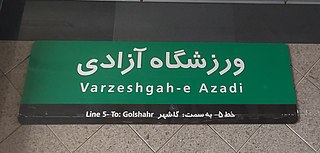Related Research Articles

G, or g, is the seventh letter in the Latin alphabet, used in the modern English alphabet, the alphabets of other western European languages and others worldwide. Its name in English is gee, plural gees.
H, or h, is the eighth letter in the Latin alphabet, used in the modern English alphabet, including the alphabets of other western European languages and others worldwide. Its name in English is aitch, or regionally haitch.

The International Phonetic Alphabet (IPA) is an alphabetic system of phonetic notation based primarily on the Latin script. It was devised by the International Phonetic Association in the late 19th century as a standardized representation of speech sounds in written form. The IPA is used by lexicographers, foreign language students and teachers, linguists, speech–language pathologists, singers, actors, constructed language creators, and translators.

Latin phonology continually evolved over the centuries, making it difficult for speakers in one era to know how Latin was spoken before then. A given phoneme may be represented by different letters in different periods. This article deals primarily with modern scholarship's best reconstruction of Classical Latin's phonemes (phonology) and the pronunciation and spelling used by educated people in the late Roman Republic. This article then touches upon later changes and other variants. Knowledge of how Latin was pronounced comes from Roman grammar books, common misspellings by Romans, transcriptions into other ancient languages, and from how pronunciation has evolved in derived Romance languages.
O, or o, is the 15th letter and the fourth vowel letter in the Latin alphabet, used in the modern English alphabet, the alphabets of other western European languages and others worldwide. Its name in English is o, plural oes.
Y, or y, is the 25th and penultimate letter of the Latin alphabet, used in the modern English alphabet, the alphabets of other western European languages and others worldwide. According to some authorities, it is the sixth vowel letter of the English alphabet. In the English writing system, it mostly represents a vowel and seldom a consonant, and in other orthographies it may represent a vowel or a consonant. Its name in English is wye, plural wyes.

Æ is a character formed from the letters a and e, originally a ligature representing the Latin diphthong ae. It has been promoted to the status of a letter in some languages, including Danish, Norwegian, Icelandic, and Faroese. It was also used in Old Swedish before being changed to ä. The modern International Phonetic Alphabet uses it to represent the near-open front unrounded vowel. Diacritic variants include Ǣ/ǣ, Ǽ/ǽ, Æ̀/æ̀, Æ̂/æ̂ and Æ̃/æ̃.
Spelling is a set of conventions that regulate the way of using graphemes to represent a language in its written form. In other words, spelling is the rendering of speech sound (phoneme) into writing (grapheme). Spelling is one of the elements of orthography, and highly standardized spelling is a prescriptive element.
Phonetic transcription is the visual representation of speech sounds by means of symbols. The most common type of phonetic transcription uses a phonetic alphabet, such as the International Phonetic Alphabet.
A phonemic orthography is an orthography in which the graphemes correspond to the language's phonemes. Natural languages rarely have perfectly phonemic orthographies; a high degree of grapheme–phoneme correspondence can be expected in orthographies based on alphabetic writing systems, but they differ in how complete this correspondence is. English orthography, for example, is alphabetic but highly nonphonemic; it was once mostly phonemic during the Middle English stage, when the modern spellings originated, but spoken English changed rapidly while the orthography was much more stable, resulting in the modern nonphonemic situation. On the contrary the Albanian, Serbian/Croatian/Bosnian/Montenegrin, Romanian, Italian, Turkish, Spanish, Finnish, Czech, Latvian, Esperanto, Korean and Swahili orthographic systems come much closer to being consistent phonemic representations.

Wylie transliteration is a method for transliterating Tibetan script using only the letters available on a typical English-language typewriter. The system is named for the American scholar Turrell V. Wylie, who created the system and published it in a 1959 Harvard Journal of Asiatic Studies article. It has subsequently become a standard transliteration scheme in Tibetan studies, especially in the United States.
In linguistics, vowel length is the perceived length of a vowel sound: the corresponding physical measurement is duration. In some languages vowel length is an important phonemic factor, meaning vowel length can change the meaning of the word, for example in Arabic, Estonian, Finnish, Fijian, Japanese, Kannada, Kyrgyz, Latin, Malayalam, Old English, Scottish Gaelic, Tamil and Vietnamese.

The Hebrew language uses the Hebrew alphabet with optional vowel diacritics. The romanization of Hebrew is the use of the Latin alphabet to transliterate Hebrew words.
A pronunciation respelling for English is a notation used to convey the pronunciation of words in the English language, which do not have a phonemic orthography.
Romanisation of Bengali is the representation of written Bengali language in the Latin script. Various romanisation systems for Bengali are used, most of which do not perfectly represent Bengali pronunciation. While different standards for romanisation have been proposed for Bengali, none has been adopted with the same degree of uniformity as Japanese or Sanskrit.

Romanization or Latinization of Persian is the representation of the Persian language with the Latin script. Several different romanization schemes exist, each with its own set of rules driven by its own set of ideological goals.
In written Latin, the apex is a mark with roughly the shape of an acute accent or apostrophe that was sometimes placed over vowels to indicate that they were long.
In French spelling, aspirated "h" is an initial silent letter that represents a hiatus at a word boundary, between the word's first vowel and the preceding word's last vowel. At the same time, the aspirated h stops the normal processes of contraction and liaison from occurring.

SoundSpel is a regular and mostly phonemic English-language spelling reform proposal. It uses a 26-letter alphabet that is fully compatible with QWERTY keyboards. Though SoundSpel was originally based on American English, it can represent dialectal pronunciation, including British English. With roots extending as far back as 1910 but largely complete by 1986, SoundSpel was developed "in response to the widely held conviction that English spelling is more complex than it needs to be." The American Literacy Council has endorsed the reform because anglophones can easily read it. Additionally, according to its proponents, "[SoundSpel] is fully compatible with traditional spelling and can be mixed with it in any proportion desired."
ISO 11940-2 is an ISO standard for a simplified transcription of the Thai language into Latin characters.
References
- ↑ Romanian Academy (2005). Dicționarul ortografic, ortoepic și morfologic al limbii române (Otrhographic, orthoepic, and morphologic dictionary of the Romanian language) (2 ed.). Univers Enciclopedic. ISBN 978-973-637-087-8.
- ↑ Faraco, Carlos Emílio (2012). Gramática nova. Francisco Marto de Moura, José Hamilton Maruxo. São Paulo: Editora Ática. ISBN 978-85-08-11311-8. OCLC 783775360.
- ↑ Vowel length in the traditional English pronunciation of Latin is not determined from classical vowel length, but from syllabification and stress.
- ↑ ΤΖΑΡΤΖΑΝΟΣ ΑΧΙΛΛΕΑΣ (2015). ΛΑΤΙΝΙΚΗ ΓΡΑΜΜΑΤΙΚΗ Γ' ΓΕΝΙΚΟΥ ΛΥΚΕΙΟΥ ΘΕΩΡΗΤΙΚΗ ΚΑΤΕΥΘΥΝΣΗ (Latin Grammar C Class of General Lycesum Humanitarian Studies). ΟΕΔΒ (ΟΡΓΑΝΙΣΜΟΥ), ΥΠ. ΠΑΙΔΕΙΑΣ- ΙΤΥΕ ΔΙΟΦΑΝΤΟΣ. ISBN 9789600624144.
- ↑ In 17c Venice soft c was /ts/: cf. Monteverdi's motet Venite sicientes (for the usual spelling sitientes)
- ↑ Benedictines Of Solesmes, ed. Liber Usualis with introduction and rubrics in English. Great Falls, Montana: St. Bonaventure Publ., 1997., p. xxxviij.
- ↑ The unaspirated k is commonly explained to anglophones as "egg shells"
- ↑ Due to XC's appearance as two separate consonants, some people eschew the standard pronunciation in favor of /kstʃ/, citation is needed for this pronunciation's authoritativeness